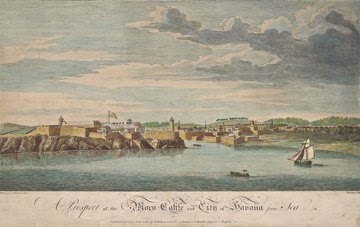British Fleet Entering Havana, Cuba 1762
Cuban Art News has an interesting article about the British view through art of their invasion of Havana, Cuba in 1762. It is a great way to remember the event 250 years later. Many of these works are in the National Museum of Fine Arts in Havana and seen by few outside of Cuba in recent decades.
Artist: Elias Dumford
Here's a quote from the Cuban Art News article:
These engravings, created under British sponsorship, are a valuable antecedent to the realistic representations of the island made during the 19th century. The presence in Havana of artists accompanying the British troops resulted not only in purely military artistic works but in some cases a sympathetic view of everyday urban and rural environments."
To read more click HERE.
was aide-de-camp to Lord Albemarle, commander of British forces during the invasion and occupation of Havana, but he also loved drawing and he made several drawings that serve as an eyewitness record of the event.
Flintlock and Tomahawk also has some contemporary illustrations by Donato Spedaliere and Giuseppe Rava of what the battle may have looked like:
So why did Britain invade and occupy Havana 250 years ago?
"The Battle of Havana (1762) was a military action from March to August 1762, as part of the Seven Years' War. British forces besieged and captured the city of Havana, which at the time was an important Spanish naval base in the Caribbean, and dealt a serious blow to the Spanish navy. Havana was subsequently returned to Spain under the 1763 Treaty of Paris that formally ended the war."
(Note: The Seven Year's War was a global war that involved the major world powers and their colonies from 1756 to 1763)
Bombardment of Morro Castle Havana, July 1, 1762




.jpg)



No comments:
Post a Comment